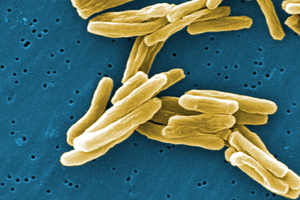UKHSA launches long term action plan to reduce tuberculosis in England
The UK Health Security Agency (UKHSA), working with NHS England (NHSE), has launched a 5-year action plan to drive down tuberculosis (TB) cases in England.
The TB action plan for England, 2021 to 2026 will improve prevention, detection and control of TB, enabling the UK to meet its commitment to the World Health Organization (WHO) End TB Strategy and eliminate TB in England by 2035. Earlier detection and treatment of TB increases likelihood of recovery and reduces chances of onward spread of disease.
Tuberculosis is a serious infectious disease, which can be life-threatening without appropriate treatment; in 2019 4.1% of cases had died by last recorded follow-up.
Across the country the story of TB prevention, detection and control has been a success, with the incidence of TB falling significantly since 2011, when it was among the highest in western Europe with a total of 8,963 cases recorded. However, in 2019 the rate of decline reversed, with cases increasing by 2.4% (from 4,615 in 2018 to 4,725 in 2019). While recorded incidence of TB fell again in 2020 (to 4,138), the coronavirus (COVID-19) pandemic has had an impact on diagnoses.
The significant impacts of the pandemic require renewed effort and focus to ensure that England gets back on track to eliminate TB. The joint UKHSA and NHSE TB action plan will build on the improvements in the prevention, detection and control of TB in England over the past 10 years, and focus on 5 key priority areas to provide partners with the tools to reduce TB incidence in all our communities.
The 5 priority areas are:
Recovery from COVID-19
It is expected that missed and delayed diagnoses, late presentation of symptoms and delayed treatment will have increased the pool of undetected and unreported TB in the community, potentially leading to and increase in TB cases in the short term.
Prevent TB
Prevent and protect susceptible people in England from acquiring TB infection and developing active disease. This will include increasing latent tuberculosis infection testing (where groups at risk of TB are screened to see if they are carrying the bacteria without displaying symptoms) and offering the BCG vaccine to all those eligible within 4 weeks of birth.
Detect TB
Improve early detection of TB by identifying, investigating and acting on the components that contribute to patient delay.
Control TB disease
Prepare and respond to emerging threats from TB transmission clusters, outbreaks and incidents and drug resistant TB. This will include the rollout of the new National TB Surveillance System and the routine provision of whole genome sequencing data to TB services to allow them to better understand how the infection is being transmitted in the local community.
Workforce
Develop and maintain the healthcare workforce to ensure workforce capacity to detect, case manage and control TB.
Dr Jenny Harries, Chief Executive, UK Health Security Agency (UKHSA) said:
Tuberculosis affects some of the most vulnerable people in our society and ensuring that everyone has access to a timely diagnosis and effective treatment is critical.
The elimination of TB in our communities is firmly within our grasp and this action plan presents a solid plan to creating a healthier future. Working with partners we will recover and build on learnings from the pandemic, injecting renewed focus into TB elimination.
NHS England’s National Medical Director, Professor Stephen Powis, said:
Thanks to the hard work of NHS staff, rates of TB are significantly lower in England than they once were – but there is more work to be done to eradicate this disease completely.
We know that there are groups who have disproportionately higher risks of contracting TB, and this action plan sets out how we’ll work with national and local partners to provide targeted support to tackle those inequalities, prevent missed or delayed diagnosis and keep people safe and well.
While the pandemic has likely led to a reduction in the detection of TB, the action plan seeks to build on lessons learned. This will include utilising the expansion of the UK’s whole-genome sequencing (WGS) capabilities and increased use of technology in healthcare.
Prior to COVID, WGS was already in universal use for TB in England and was used to detect clusters and outbreaks and support prevention of TB transmission. The engagement between local authority public health and health protection teams on contact tracing during the pandemic will support future public health interventions to prevent TB.
The action plan will also build on innovative approaches across England to reach under-served populations, who are at greatest risk of TB. This includes schemes such as ‘Car in the Community’ in Lincolnshire, a team of nurses, who deliver care and tailored support to vulnerable groups direct from their car, to increase engagement and ease of access to healthcare in rural settings.
As TB disproportionally impacts on under-served populations such as those who have ever been homeless, spent time in prison or misused drugs and other substances, creative and collaborative approaches to not only detect cases, but ensure treatment completion will be critical to drive down cases in this country.

